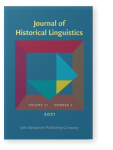Vol. 11:2 (2021) ► pp.299–341
Alignment shift as functional markedness reversal
In this paper, we propose treating alignment shift as a process of functional markedness reversal in the domain of semantically transitive constructions. We illustrate how this approach allows us to capture similarities between the alignment shifts in Eskimo-Aleut and Western Austronesian languages, despite morphosyntactic differences in their voice systems. Using three diagnostics of functional markedness (semantic transitivity, topic continuity of P, and discourse frequency), we compare antipassive and ergative constructions in Eskimo-Aleut varieties and actor voice (av) and undergoer voice (uv) constructions in Western Austronesian varieties. We argue that ergative alignment is equivalent to a functionally unmarked P-prominent construction (e.g., ergative, uv), whilst accusative alignment is equivalent to a functionally unmarked A-prominent construction (e.g., antipassive, av). On this basis, we claim that both language groups are undergoing a parallel shift from ergative to accusative, since A-prominent constructions are functionally marked in more conservative varieties, but lose their functionally marked character and begin to function as unmarked transitive constructions in more innovative varieties.
Article outline
- 1.Introduction
- 2.Markedness
- 2.1Markedness and transitive constructions
- 2.2Functional markedness and alignment shift
- 3.Marked A-prominent constructions
- 3.1The antipassive in Eskimo-Aleut
- 3.2The actor voice construction in Western Austronesian
- 3.3Summary
- 4.Functional markedness reversal
- 4.1The antipassive in Eskimo-Aleut
- 4.2The actor voice construction in Western Austronesian
- 4.3Summary
- 5.Conclusion
- Acknowledgements
- Notes
- Abbreviations
-
References
